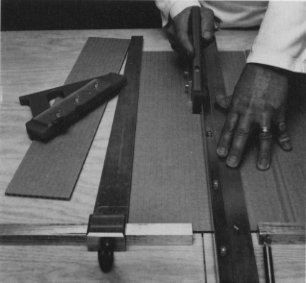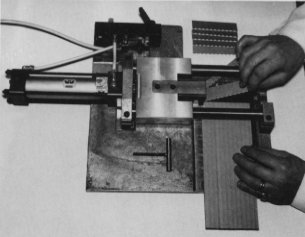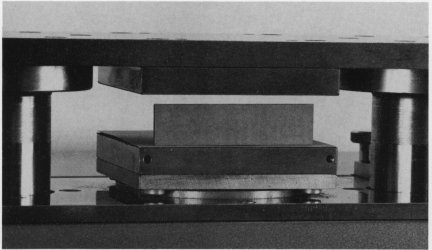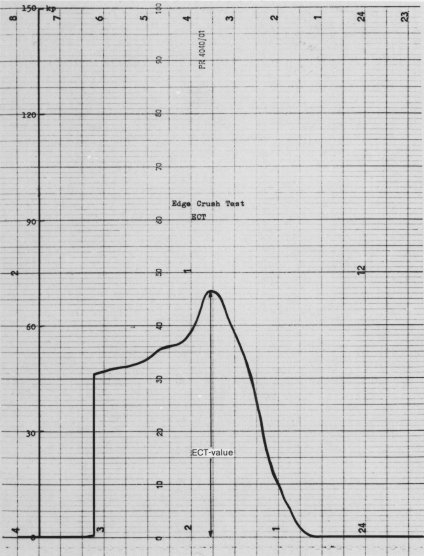Pkg Solutions
Quality Glossary
ECT - Testing
For the testing of ECT (Edge Crush Test), specimens
are cut with a length of 100 mm and the width of 25 mm from conditioned
board. ECT then is measured in a compression tester with the specimen
standing with the glue lines vertically.
10 individual specimens are crushed and the average
is calculated and reported in kN/m. 7 % variation is normal for a good
corrugated board. The American method with wax dipping the edges of the
test specimen or the Japanese method with "neck down" may somewhat
reduce the variation but even better is the calculation of ECT from the
crush resistance of the components liner and fluting.
|
 |
With a razor blade slitter
test sheets 100 mm wide are cut from the board, with the cuts being made
parallel to the flutes. The Billerud cutting table is a handy tool for
this purpose. |
|
 |
From the test sheet, test
pieces 25 mm wide are cut perpendicular to the flutes. It is very important
that the cut edges are straight, clean and parallel and perpendicular
to the flutes. A special precision cutter has been developed by Billerud
and this device is now marketed by AB Lorentzen & Wettres Maskinaffdr,
Stockholm under the trade name "Billerud cutter". |
Scope And Application
This test is used to determine the compression rigidity
of corrugated board and solid fiberboard above 800 um. This property is
related to the prediction of a board's performance when used in cartons
or fiberboard cases.
|
 |
Principle
A test piece is subjected to an increasing force applied
in the direction of the shorter dimension of a sample strip in a compression
tester conforming to standard design
Test Piece Holder
The holder consists of two bare of rectangular cross
section which can be held together such that the full length and 19 mm
+/- 0.2 mm of the test piece is securely clamped in a vertical position.
Cutting Device
Ten strips must be cut with absolutely square edges.
Solid board test strips may be cut by guillotine.
Corrugated board strips are cut using the illustrated
cutter. |
|
 |
Sampling
Samples and specimens to be selected according to intended
application of tent, i.e. as required for routine testing or in accordance
with BS 3430.
Preparation and Conditioning
of Test Pieces
Condition specimens in accordance with BS 3431 (Test
conditions 65% R.H and 20 degrees C). Cut sufficient test pieces for test
purposes. For normal needs board is only tested in the "across machine"
direction, i.e. grain running in the longer dimension of the strip. Tests
may be conducted in machine direction as required. Strips must be cut
cleanly and with parallel edges.
Test pieces should be cut:
100.0 +/- 0.1 mm X 25.0 +/- 0.1 mm
COMPRESSION TESTER SPEED: 10mm / Min
Procedure
Test in standard conditioning atmosphere. Place specimen
strip in the holder tighten sufficiently to ensure strip is vertical without
damaging the specimen. Operate the tester until the test piece collapses.
Record the maximum. force sustained by the test piece before collapse
to the nearest Newton. |
Report
1) For machine-direction and across machine-direction
separately, the mean of the test results to the nearest Newton together
with the range of results. Results should be reported in units of KN/M.
2) Any deviation from this standard method